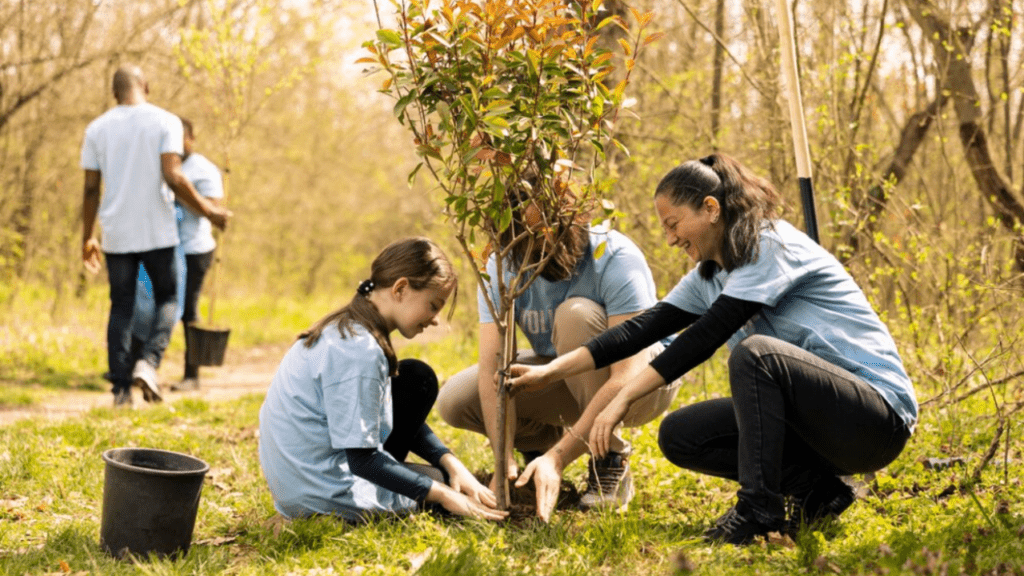
All Seasons Tree Care: Your Landscape's Year-Round Guardian
Caring for your trees year-round is essential for maintaining a healthy and beautiful landscape. Each season brings its own set of challenges and requirements for tree care. It’s important to stay on top of maintenance to ensure the health and longevity of your trees. In this article, we will discuss the importance of year-round tree care and provide tips and techniques for keeping your trees healthy in every season. Whether it’s pruning in the spring, watering in the summer, or protecting from winter weather, proper tree care is essential for a thriving landscape.
Table of Contents
ToggleThe Importance of Year-Round Tree Care
Trees are not only beautiful additions to our landscapes but also essential components of healthy ecosystems. To ensure trees remain vibrant and resilient, year-round tree care is crucial. Here’s why consistent and comprehensive tree care throughout the year is essential:
Seasonal Maintenance
Each season brings its own set of challenges and requirements for tree care. From pruning and fertilizing in the spring to protecting against winter stressors, addressing seasonal needs ensures trees remain healthy and resilient year-round.
Health and Vigor
Regular tree care, including pruning, fertilizing, and pest management, promotes overall tree health and vigor. By addressing issues promptly and proactively, tree care professionals can prevent problems from escalating and maintain optimal tree condition.
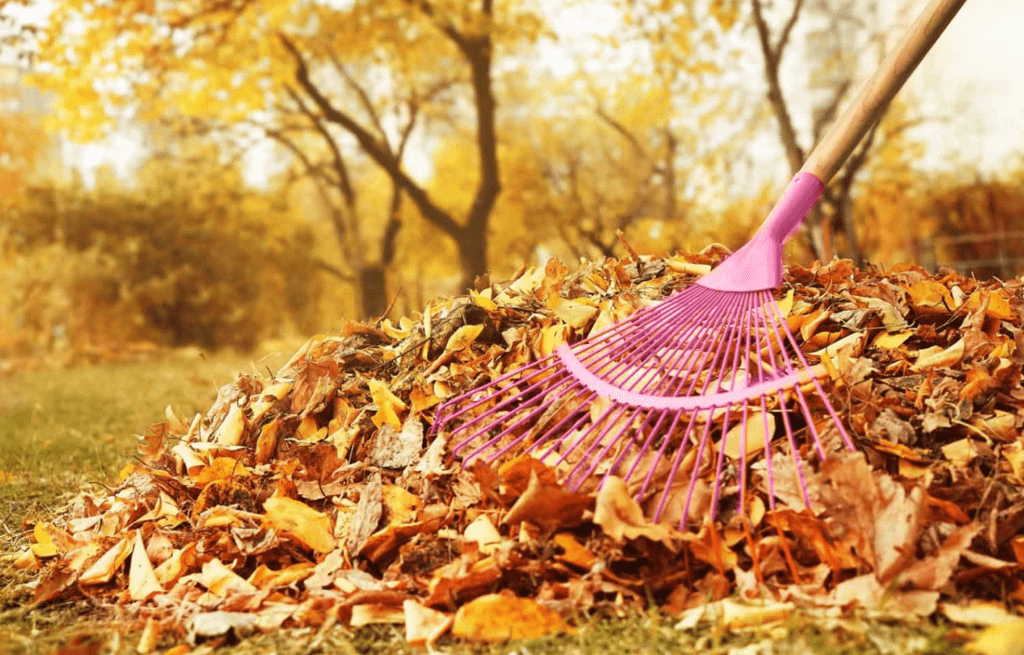
Structural Integrity
Pruning is an essential aspect of year-round tree care. It helps maintain proper structure and reduce the risk of limb failure. Regular pruning ensures that trees develop strong, well-balanced branches that can withstand wind, snow, and other environmental stressors.
Pest and Disease Management
Pests and diseases can pose significant threats to tree health if left unchecked. Regular monitoring and proactive management are essential to identify and address pest and disease issues before they cause widespread damage.
Environmental Benefits
Healthy trees provide a wide range of environmental benefits, including shade, air purification, and habitat for wildlife. By maintaining trees in optimal condition year-round, we can maximize these benefits and contribute to a healthier environment.
Property Protection
Well-maintained trees are less likely to pose risks to property and infrastructure. Proper pruning and maintenance help prevent limb failure and root damage, reducing the risk of property damage and personal injury.
Aesthetic Appeal
Trees are an integral part of our landscapes, providing beauty and visual interest throughout the year. Regular tree care helps ensure trees remain attractive and enhance the overall aesthetic appeal of outdoor spaces.

Long-Term Sustainability
Investing in year-round tree care promotes the long-term sustainability of trees and landscapes. By addressing issues promptly and implementing sustainable management practices, we can preserve tree health and vitality for future generations to enjoy.
Spring Tree Care Tips
Spring is a time of renewal, and that includes your trees! As winter’s icy grip loosens and warmer days arrive, your trees are awakening from dormancy and gearing up for a burst of new growth. To ensure they flourish throughout the growing season, here are some essential spring tree care tips:
Pruning and Trimming
- Time to Trim: Prune most trees while they are still dormant, in late winter or very early spring before new buds appear. This minimizes stress on the tree and allows for better visibility of branch structure.
- Target Your Cuts: Remove dead, diseased, or overcrowded branches. This allows for better air circulation and sunlight penetration, promoting healthy growth and reducing the risk of disease.
- Focus on Shape: For some trees, shaping might be necessary. Aim for cuts that enhance the tree’s natural form and avoid topping (cutting off the entire top of the tree), which can weaken the structure.
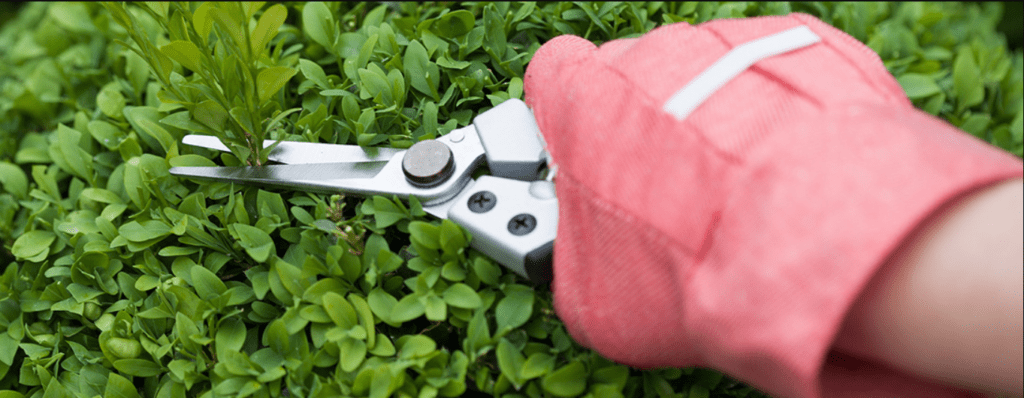
Disease Prevention
- Fungal Foes: Spring’s wet weather can create ideal conditions for fungal diseases. Applying preventative fungicide treatments recommended by a certified arborist can help protect your trees from these threats.
- Early Detection is Key: Regularly inspect your trees for signs of disease, such as discolored leaves, unusual growths, or oozing sap. Early intervention is crucial for successful treatment and minimizing damage.
Planting and Transplanting
- Seize the Opportunity: Spring’s moderate temperatures and increased moisture make it an ideal time for planting new treesor transplanting existing ones.
- Choose Wisely: Select trees suited to your climate and growing conditions. Consider factors like mature size, sunlight needs, and soil type.
- Planting Power: Ensure proper planting techniques are followed. Dig a hole large enough to accommodate the root ball, avoid planting too deep, and stake the tree for support if necessary.
Waking Up the Roots
- Deep Root Watering: Especially after a dry winter, a deep root watering session can help rehydrate the root zone and encourage healthy spring growth.
- Mulch Magic: Apply a fresh layer of mulch around the base of the tree (but not touching the trunk) to retain moisture, regulate soil temperature, and suppress weed growth. Choose a material like shredded bark or wood chips that allows for good air and water penetration.
Bonus Tip: A Yearly Check-Up
Consider scheduling a consultation with a certified arborist in early spring. They can assess the overall health of your trees, identify any potential problems, and recommend a personalized care plan to ensure your trees thrive throughout the year.
Summer Tree Care Tips
Summer’s warm days and long stretches of sunshine. It can be a welcome change, but the scorching heat and dry conditions can take a toll on your trees. To ensure your leafy companions survive and thrive during the hottest months, here are some essential summer tree care tips:
Deep Root Watering is Key
Unlike shallow sprinkling, deep root watering ensures water reaches the root zone where it’s most needed. Use a slow, soaking method, like a soaker hose or drip irrigation system, for at least an hour or two, focusing on the area beyond the drip line (the outer edge of the tree’s canopy).
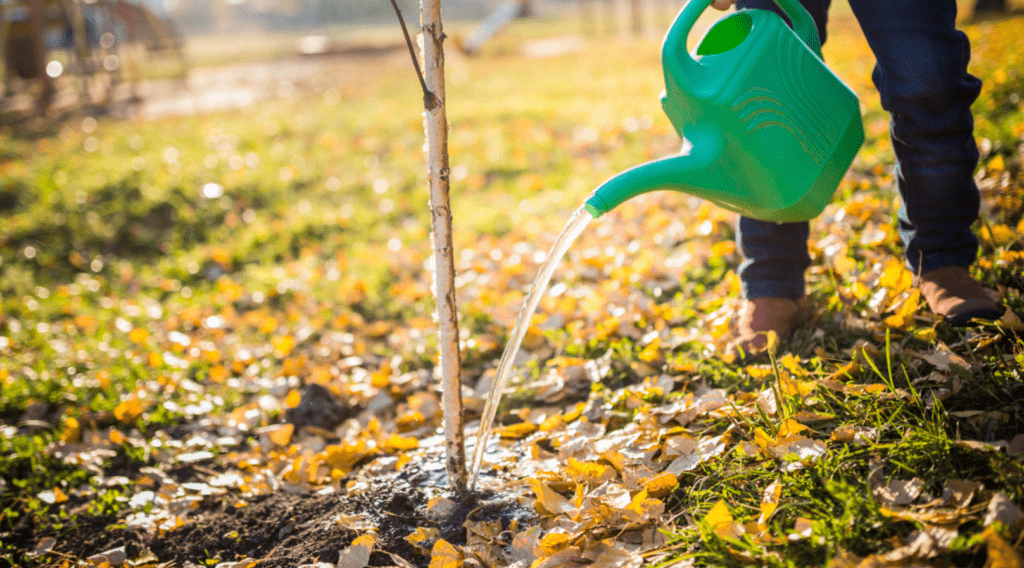
Frequency Matters
The frequency of watering depends on several factors like soil type, tree size, and weather conditions. Generally, newly planted trees and those in containers will need more frequent watering than established trees. Stick your finger in the soil to check moisture levels – if it feels dry down to a few inches, it’s watering time.
Know Your Schedule
Early morning is the best time to water, as it minimizes evaporation and allows the tree to absorb moisture throughout the day.
- Moisture Retention Hero: Mulch acts as a natural insulator. It helps to retain moisture in the soil and reducing evaporation during hot weather.
- Apply Strategically: Apply a 2-3 inch layer of mulch around the base of the tree, extending outwards to the drip line. Avoid creating a volcano-like mound around the trunk, as this can trap moisture and promote rot.
Summer Sun Protection (For Young Trees)
- Wilting Woes: Young trees with less established root systems are more susceptible to sunburn on their delicate bark. Consider providing temporary shade with a burlap screen or shade cloth positioned on the south or southwest side of the tree during the hottest part of the day.\
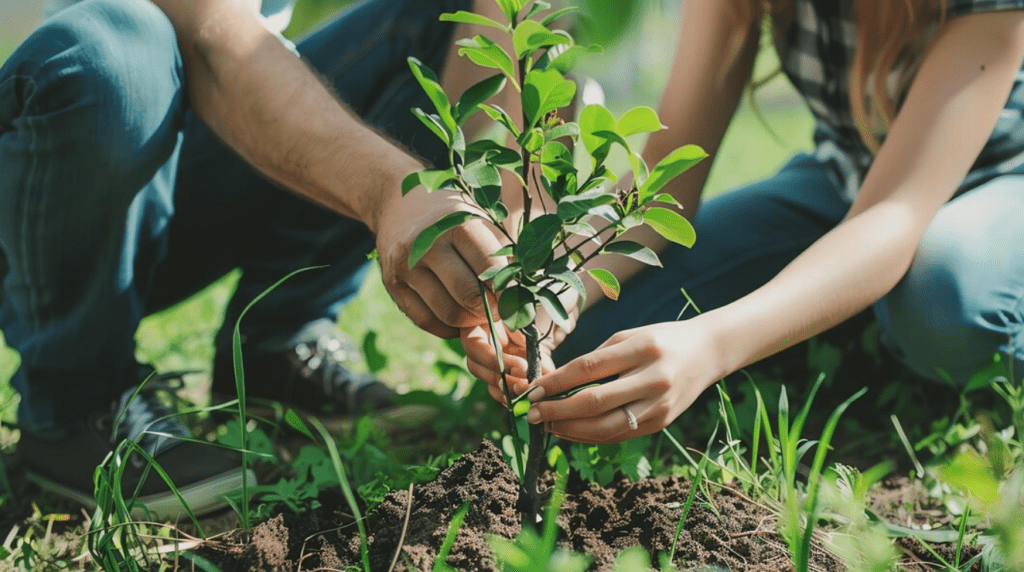
Watch for Pests and Diseases
- Summer Stressors: Hot weather can weaken trees and make them more vulnerable to pests and diseases. Regularly inspect your trees for signs of trouble, such as insect infestations, unusual leaf spots, or wilting.
- Early Intervention is Crucial: If you suspect a problem, contact a certified arborist for proper identification and treatment recommendations. Early intervention can minimize damage and save your tree.
Avoid Summer Pruning (Unless Necessary)
- Stressful Snips: Summer is generally not the ideal time for major pruning or trimming. Pruning can stress trees already battling hot weather and can make them more susceptible to disease. However, if you notice a dead, diseased, or broken branch that poses a safety hazard, removal is necessary.
Fall Tree Care Tips
As summer’s warmth fades and vibrant hues paint the landscape, fall presents a crucial window for tree care. By taking some proactive steps now, you can ensure your trees enter winter well-prepared and emerge healthy and vibrant come spring. Here are some essential fall tree care tips to incorporate into your routine:
Watering Wisely
- Don’t Forget Hydration: Even though fall brings cooler temperatures, trees still require adequate moisture, especially evergreens, which continue to lose moisture through their needles throughout winter. Water deeply and thoroughly 1-2 times a week, focusing on the root zone, until the ground freezes.
Aeration and Mulching
- Breathe Easy: Fall is the perfect time for core aeration, especially for compacted soil. This process alleviates compaction, allowing for better air and water flow to the roots, which is vital for optimal health throughout the winter and spring growth.
- Mulch Magic: Apply a fresh layer of 2-3 inches of mulch around the base of the trees (keeping it away from the trunk) before the ground freezes. Mulch retains moisture, regulates soil temperature, and suppresses weed growth, providing vital protection for the root zone during winter.
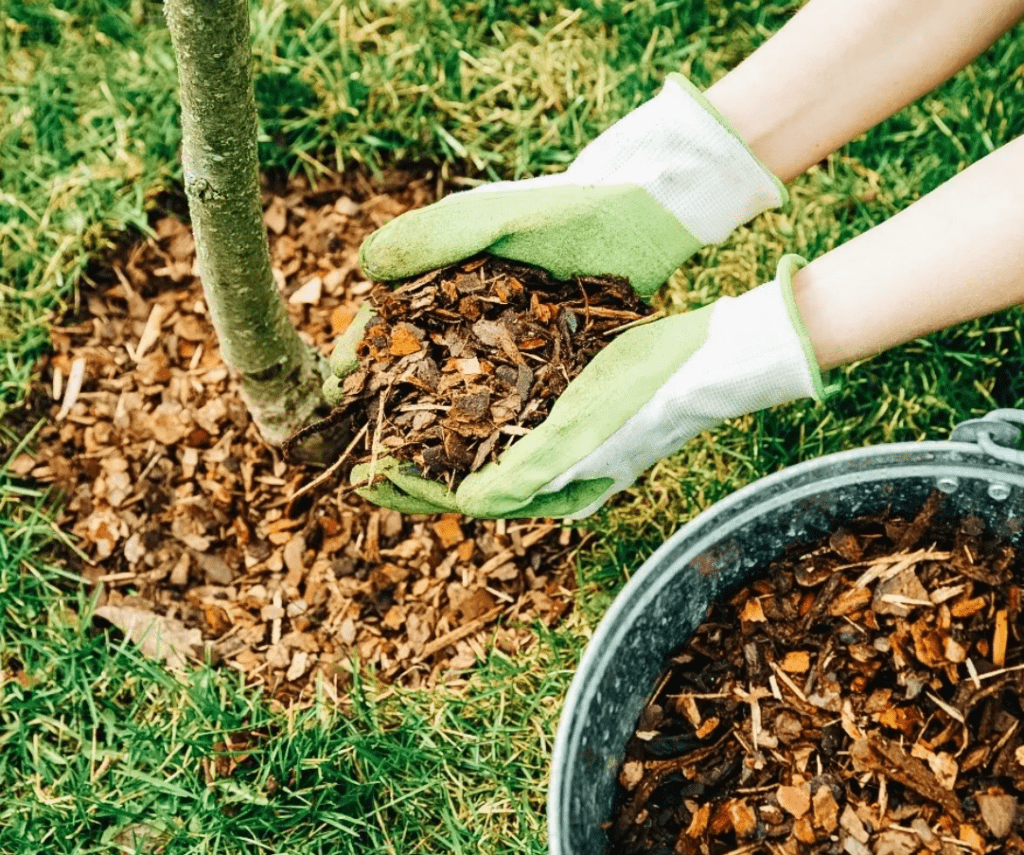
Raking Up the Right Way
- Leaf Litter Management: While fallen leaves can create a picturesque scene, leaving them in thick piles around the base of trees can trap moisture and promote fungal diseases. Rake or blow leaves away from the trunk to promote air circulation and prevent moisture buildup. You can compost the leaves for later use as nutrient-rich mulch.
Pruning for Winter
- Selective Snips: Fall is an ideal time for light pruning for some tree varieties. Focus on removing dead, diseased, or broken branches that could pose a hazard from winter storms. Avoid major pruning cuts, as this can stress trees before winter dormancy.
Planting Power
- Fall Planting Perks: Depending on your climate, fall can be a suitable time for planting new trees or transplanting existing ones. The cooler temperatures and increased moisture can create favorable conditions for root establishment before winter dormancy.
Winterizing Young Trees and Evergreens
- Protecting Tender Trunks: For young trees with thin bark, consider wrapping the trunk with burlap or a commercial tree wrap to protect them from potential winter sunscald damage.
- Evergreen Attention: For evergreens, especially broadleaf varieties, consider applying an anti-desiccant spray to help minimize winter desiccation, which is the drying out of leaves due to cold winds and freezing temperatures.
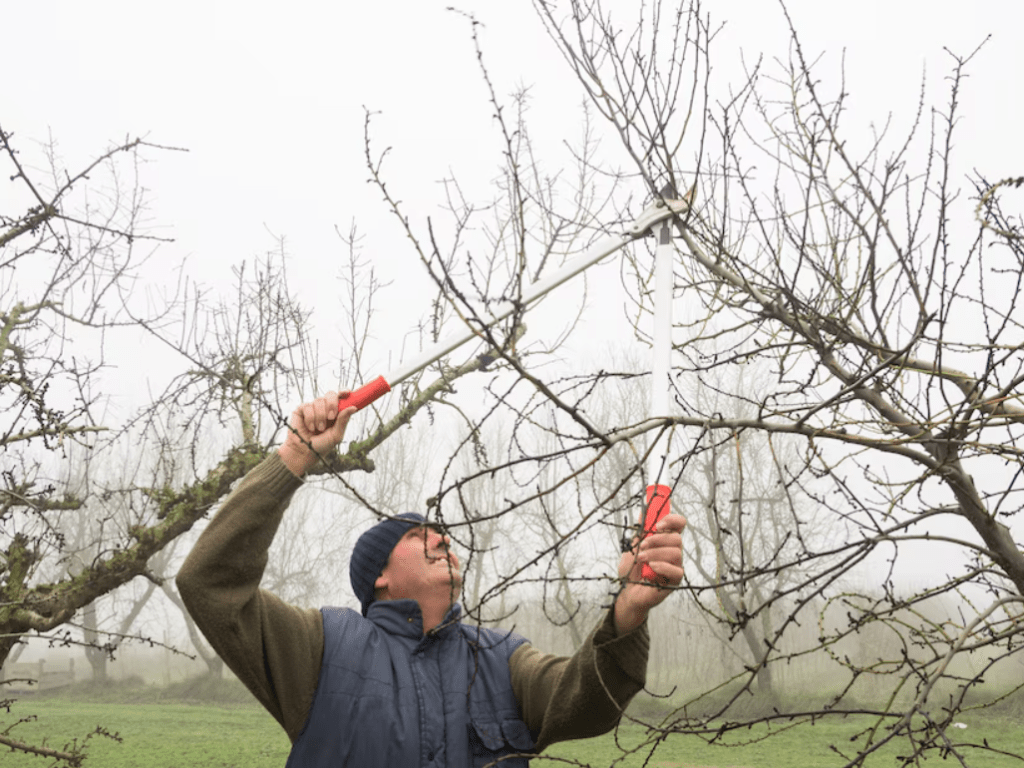
A Time for Assessment
- Call in the Experts: Fall is a great time to schedule a consultation with a certified arborist. They can conduct a comprehensive tree health assessment, identify any potential problems like hidden diseases or structural weaknesses, and recommend a personalized care plan to ensure your trees thrive throughout the winter and beyond.
Winter Tree Care Tips
Winter’s frosty grip may seem like a time of dormancy for your trees, but that doesn’t mean they don’t need attention. By taking some proactive steps now, you can ensure your trees weather the cold and emerge healthy and vibrant come spring. Here are some essential winter tree care tips to keep your trees thriving:
Protection from the Elements
- Young and Tender: For young trees with thin bark, consider wrapping the trunk with burlap or a commercial tree wrap. This protects them from potential winter sunscald damage caused by the harsh sun reflecting off snow in cold weather.
- Evergreen Aid: Broadleaf evergreens are particularly susceptible to winter desiccation, which is the drying out of leaves due to cold winds and freezing temperatures. Applying an anti-desiccant spray in late fall or early winter can help minimize this moisture loss.
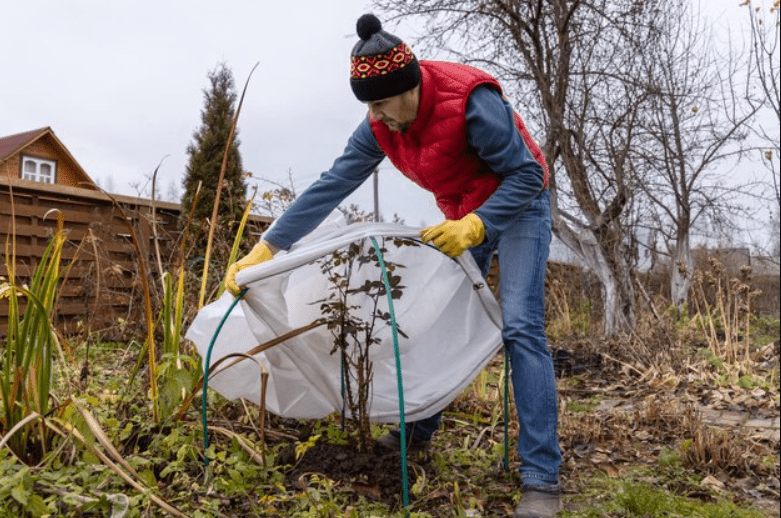
Watch Out for Heavy Snow
- Bending Branch Woes: Heavy snowfall can accumulate on branches, causing them to bend or break. During or after a snowstorm, gently brush excess snow off tree limbs, especially for young trees or those with weak branch unions. Be careful not to damage the branches themselves.
Avoid Harsh Winter Pruning
- Wait for Warmer Days: Major pruning cuts are best avoided during winter dormancy. Pruning wounds can become vulnerable to infection during this time. Wait for late winter or early spring when temperatures begin to rise for any significant pruning needs.
Winter Watering (Especially During Thaws)
- Hydration Even in Winter: Even though trees are dormant, they still require some moisture, especially during winter thaws. If there’s a prolonged dry spell with little to no snowfall, water the trees deeply at the base, focusing on the root zone, during a warm spell when the ground is not frozen.
Planning for Spring
- A Time for Assessment: Winter is a great time to assess your trees’ overall health from the comfort of your home. Look for any signs of damage from winter storms, such as broken branches or significant cracks in the trunk. Make a note of these and schedule a consultation with a certified arborist in early spring for a more thorough inspection and professional recommendations.
- Order Dormant Oil Sprays: If your trees are susceptible to certain insect infestations or diseases, consider ordering dormant oil spray in advance. These sprays are most effective when applied during the dormant season, typically in late winter or early spring before bud break.
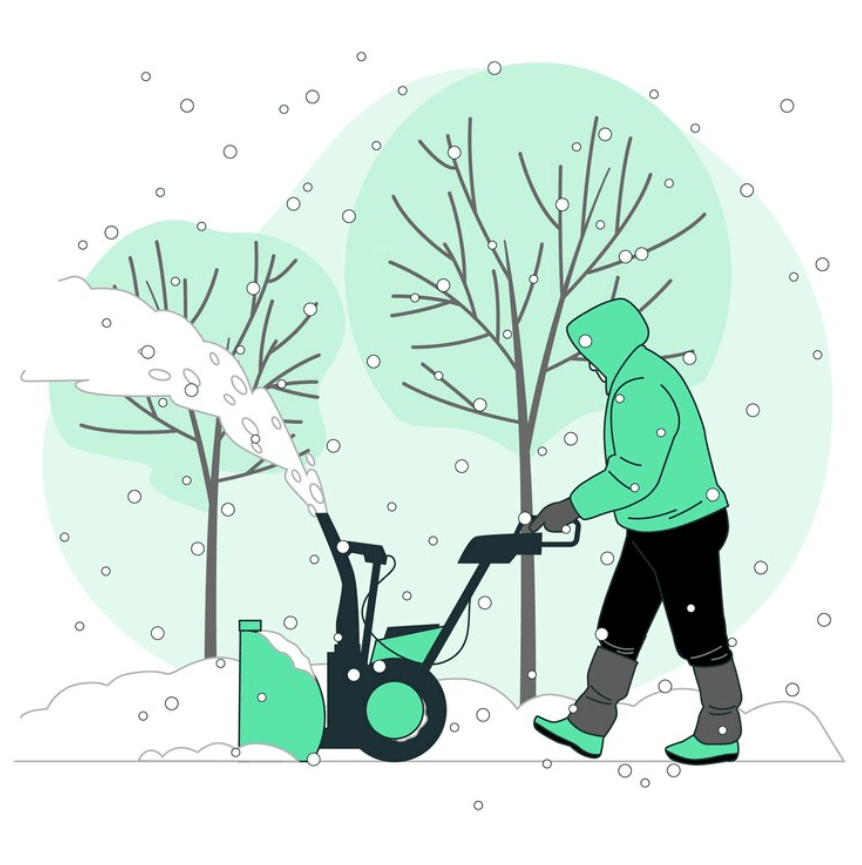
Benefits of Regular Tree Care
Trees are majestic additions to our properties, gracing us with shade, beauty, and a connection to the natural world. Regular tree care isn’t just about aesthetics. It offers a multitude of benefits for your trees, your property, and the environment as a whole. Let’s delve into the rewarding reasons to embrace a consistent tree care routine:
Enhanced Tree Health and Longevity
- Disease and Pest Prevention: Regular inspections and preventative measures help identify and address potential threats like pests and diseases early on. It minimizes damage and ensuring your trees live long, healthy lives.
- Proper Pruning: Strategic pruning removes dead, diseased, or overcrowded branches, allowing for better air circulation and sunlight penetration. It reduces the risk of disease and promotes healthy growth.
- Targeted Treatments: Arborists can recommend treatments for specific issues, like nutrient deficiencies or fungal diseases, ensuring your trees receive the care they need to flourish.
Safeguarding Your Property and Loved Ones
- Reduced Risk of Property Damage: Healthy trees with strong root systems and properly pruned branches are less likely to succumb to high winds or storms, minimizing the risk of damage to your home, car, or other structures.
- Sidewalk and Foundation Protection: Uncontrolled root growth can crack sidewalks, driveways, and even damage foundations. Regular care, including root barrier installation when necessary, can prevent these costly issues.
- A Safe Outdoor Space: Dead or diseased branches pose a significant falling hazard. Regular inspections and proper maintenance can create a safer environment for you, your family, and your pets to enjoy.
Environmental Advantages
- Air Purification Powerhouses: Trees act as nature’s air filters, absorbing carbon dioxide and releasing oxygen, contributing to cleaner air quality.
- Erosion Control Champions: Healthy root systems help prevent soil erosion, especially on slopes, minimizing environmental damage.
- Habitat Havens: Trees provide vital food and shelter for a variety of wildlife species, promoting biodiversity and a healthy ecosystem.
Increased Property Value
- Curb Appeal Boost: Well-maintained trees with vibrant foliage and a healthy structure significantly enhance the visual appeal of your property, potentially increasing its value.
- Maturity Matters: Mature trees add a sense of established beauty and grandeur to a property, making it even more desirable to potential buyers.
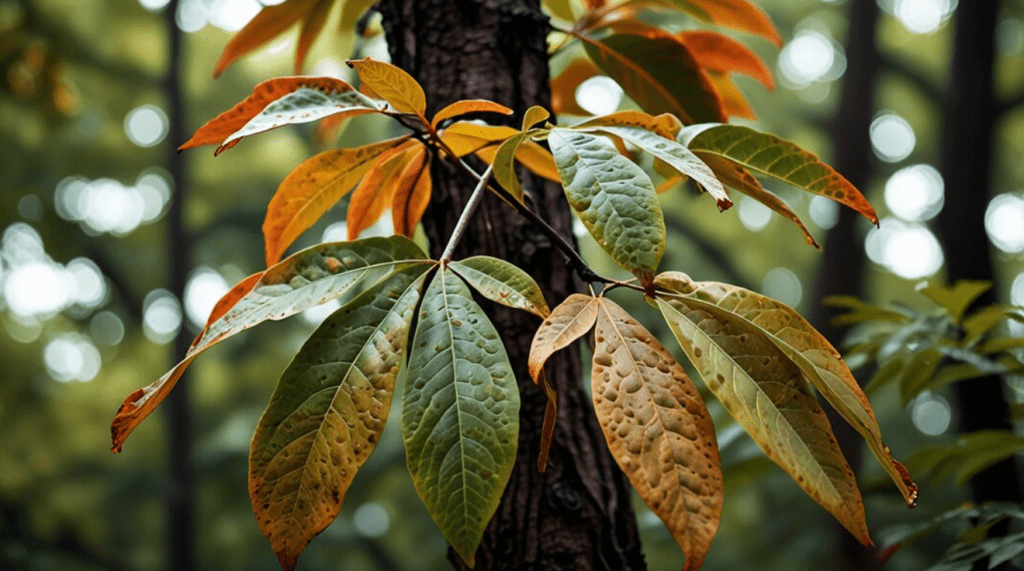
Peace of Mind and Professional Expertise
- Early Detection: Regular care by a certified arborist allows for early identification of potential problems, enabling prompt intervention and minimizing future damage.
- The Right Care for Every Season: Arborists possess the knowledge and experience to recommend the most appropriate care throughout the year, ensuring your trees receive what they need to thrive in each season.
- A Sustainable Approach: Professional arborists prioritize sustainable practices, ensuring your trees are cared for in a way that benefits both your landscape and the environment.
By embracing regular tree care, you’re not just investing in the health and beauty of your trees. You’re investing in the safety and value of your property, and contributing to a healthier planet for all. So, schedule those tree care appointments, and watch your landscape flourish throughout the year.
In conclusion, taking care of your trees year-round is essential for maintaining a healthy and beautiful landscape. By following the tips and techniques provided in this article, you can ensure that your trees thrive in every season and contribute to the overall beauty of your property. Regular tree care not only enhances the aesthetic appeal of your landscape. But it also promotes the health and longevity of your trees. So, make sure to prioritize year-round tree care to keep your landscape looking its best.
Frequently Asked Question (FAQ)
Year-round tree care is essential for maintaining healthy, resilient trees. It addresses seasonal needs, promotes overall tree health, and helps prevent issues such as pests, diseases, and structural problems.
Seasonal tree care tasks include pruning, fertilizing, pest monitoring, and protection against environmental stressors. These tasks are tailored to address the specific needs of trees at different times of the year.
Year-round tree care promotes tree health and vigor by addressing issues promptly and proactively. Tasks such as pruning, fertilizing, and pest management help maintain optimal tree condition and resilience.
Signs that your tree may need professional care include dead or diseased branches, insect infestations, signs of stress such as wilting or yellowing leaves, and structural issues such as leaning or cracking.
Regular pruning promotes proper tree structure, reduces the risk of limb failure, and improves air circulation and sunlight penetration. It also enhances the overall aesthetic appeal of trees and landscapes.
Protecting trees from pests and diseases involves regular monitoring, proper sanitation practices, and timely intervention when issues arise. Professional arborists can provide expertise in identifying and managing pest and disease problems.
While some tree care tasks can be performed by homeowners, others are best left to trained professionals. Hiring a certified arborist ensures that tree care tasks are performed safely and effectively, with consideration for tree health and long-term sustainability.
Healthy trees provide numerous environmental benefits, including air purification, carbon sequestration, habitat for wildlife, and soil erosion prevention. Maintaining healthy trees contributes to a healthier environment for all.
